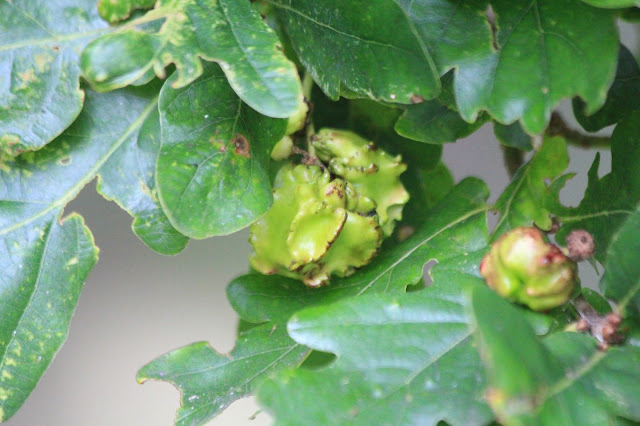If you have been wandering around some beautiful oak
woodland recently and have decided to admire the erupting tender green acorns,
you may have noticed something a bit strange. On some oak trees you might
notice that the acorns are not that familiar smooth oval shape, peeking out
from under their textured cap, instead they are glossy and pointy.
This bizarre transformation is the result of the fascinating
activities of gall wasps. In the case of the oak that we came across in
Anglesey Abbey’s gardens on the weekend, the wasp in question was Andricus
quercuscalicis. This wasp uses its ovipositor to inject its eggs into the fertilised
oak flowers. When the eggs hatch chemicals are released which force the oak to
produce growths which encase the wasp’s larvae. These distinctive knobbly
protrusions are known as knopper galls.
As the summer turns to autumn, these galls
will fade from lime-green to brown and eventually drop off the tree just like
the acorns around them. But this isn’t the end of the larvae inside. They will
sit and wait throughout the bitterest winters, safe and snug inside their galls
until spring sweeps across the land bringing with it more palatable weather.
Only at this time will the wasps emerge from their galls as fully grown adults,
ready to begin the cycle again.
Interestingly, Andricus quercuscalicis relies
on the presence of two species of oak tree in order to reproduce. Each year
there are two generations of wasp, the first is a generation produced sexually
and laid in the flowers of the Turkey oak (Quercus cerris) and the
second is a generation produced asexually and laid in the flowers of the
pendunculate oak (Quercus robur).
So next time you see these curious misshapen swellings where you would expect to see a nice neat acorn, stop for a moment and appreciate the extraordinary processes of nature which led to their creation.





No comments:
Post a Comment